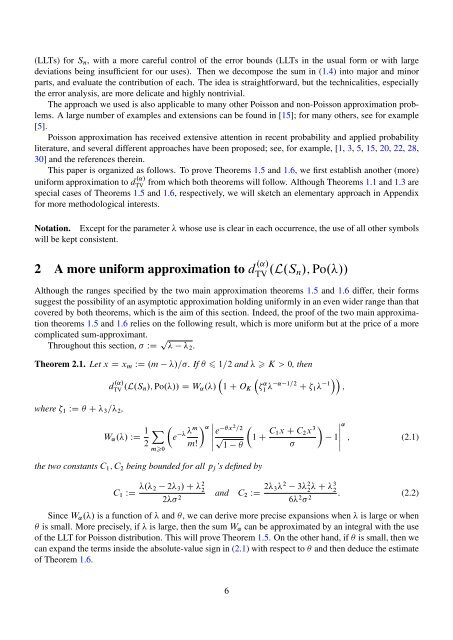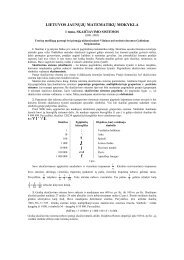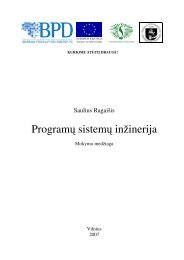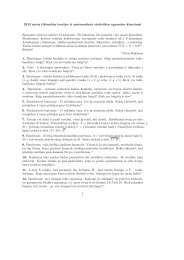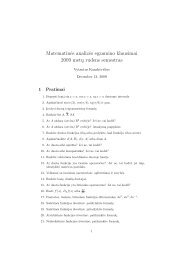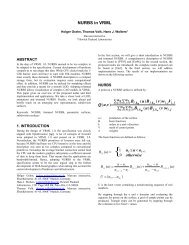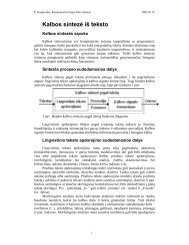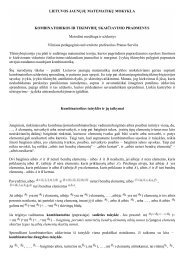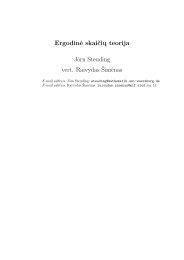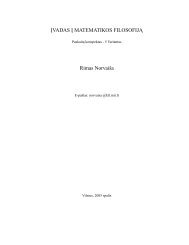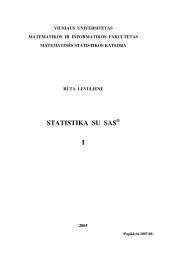Preprint
Preprint
Preprint
Create successful ePaper yourself
Turn your PDF publications into a flip-book with our unique Google optimized e-Paper software.
(LLTs) for S n , with a more careful control of the error bounds (LLTs in the usual form or with largedeviations being insufficient for our uses). Then we decompose the sum in (1.4) into major and minorparts, and evaluate the contribution of each. The idea is straightforward, but the technicalities, especiallythe error analysis, are more delicate and highly nontrivial.The approach we used is also applicable to many other Poisson and non-Poisson approximation problems.A large number of examples and extensions can be found in [15]; for many others, see for example[5].Poisson approximation has received extensive attention in recent probability and applied probabilityliterature, and several different approaches have been proposed; see, for example, [1, 3, 5, 15, 20, 22, 28,30] and the references therein.This paper is organized as follows. To prove Theorems 1.5 and 1.6, we first establish another (more)uniform approximation to d .˛/TV from which both theorems will follow. Although Theorems 1.1 and 1.3 arespecial cases of Theorems 1.5 and 1.6, respectively, we will sketch an elementary approach in Appendixfor more methodological interests.Notation. Except for the parameter whose use is clear in each occurrence, the use of all other symbolswill be kept consistent.2 A more uniform approximation to d .˛/TV .L.S n/; Po.//Although the ranges specified by the two main approximation theorems 1.5 and 1.6 differ, their formssuggest the possibility of an asymptotic approximation holding uniformly in an even wider range than thatcovered by both theorems, which is the aim of this section. Indeed, the proof of the two main approximationtheorems 1.5 and 1.6 relies on the following result, which is more uniform but at the price of a morecomplicated sum-approximant.Throughout this section, WD p 2 .Theorem 2.1. Let x D x m WD .md .˛/TV .L.S n/; Po.// D W˛.//=. If 1=2 and K > 0, then 1 C O K˛1 ˛ 1=2 C 1 1 ;where 1 WD C 3 = 2 ,W˛./ WD 1 X2m0e me x2 =2˛pm!ˇˇˇˇˇ 11 C C 1x C C 2 x 3 1ˇ˛; (2.1)the two constants C 1 ; C 2 being bounded for all p j ’s defined byC 1 WD . 2 2 3 / C 2 22 2 and C 2 WD 2 3 2 3 2 2 C 3 26 2 2 : (2.2)Since W˛./ is a function of and , we can derive more precise expansions when is large or when is small. More precisely, if is large, then the sum W˛ can be approximated by an integral with the useof the LLT for Poisson distribution. This will prove Theorem 1.5. On the other hand, if is small, then wecan expand the terms inside the absolute-value sign in (2.1) with respect to and then deduce the estimateof Theorem 1.6.6


